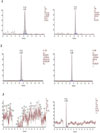1. Benaiges A, Marcet P, Armengol R, Betes C, Gironés E. Int J Cosmet Sci. 1998; 20:223–233.
2. Jenkins G. Mech Ageing Dev. 2002; 123:801–810.
3. Schlotmann K, Kaeten M, Black AF, Damour O, Waldmann-Laue M, Förster T. Int J Cosmet Sci. 2001; 23:309–318.
4. McCullough JL, Kelly KM. Ann N Y Acad Sci. 2006; 1067:323–331.
5. Aslam MN, Lansky EP, Varani J. J Ethnopharmacol. 2006; 103:311–318.
6. Chanchal D, Swarnlata S. J Cosmet Dermatol. 2008; 7:89–95.
7. Farris PK. Cosmetic Dermatol. 2003; 16:59–72.
8. Roy A, Sahu RK, Matlam M, Deshmukh VK, Dwivedi J, Jha AK. Pharmacogn Rev. 2013; 7:97–106.
9. Pandel R, Poljšak B, Godic A, Dahmane R. ISRN Dermatol. 2013; 2013:930164.
10. Taniguchi M, Arai N, Kohno K, Ushio S, Fukuda S. Eur J Pharmacol. 2012; 674:126–131.
11. Johnston MF, Hili P, Naughton DP. BMC Complement Altern Med. 2009; 9:1–11.
12. Tsai PJ, McIntosh J, Pearce P, Camden B, Jordan B. Food Res Int. 2002; 35:351–356.
13. Mohamad O, Mohd B, Abdul M, Herman S. Bull PGM. 2002.
14. Widowati W, Wijaya L, Wargasetia TL, Bachtiar I, Yellianty Y, Laksmitawati DR. J Exp Integr Med. 2013; 3:225–230.
15. Widowati W, Ratnawati H, Rusdi U, Winarno W, Imanuel V. HAYATI J Biosci. 2010; 17:85–90.

16. Bera TK, Chatterjee K, Ghosh D. Int J Ayurveda Res. 2010; 1:18–24.
17. Adnyana IK, Abuzaid AS, Iskandar EY, Kurniati NF. . Int J Med Res Health Sci. 2016; 5:23–28.
18. Widowati W, Ratnawati H, Husin W, Maesaroh M. Biomed Eng. 2015; 1:24–29.
19. Widowati W, Herlina T, Ratnawati H, Constantia G, Deva I, Maesaroh M. Biol Med Nat Prod Chem. 2015; 4:35–39.
20. Lucini L, Pellizzoni M, Baffi C, Molinari GP. J Sci Food Agric. 2012; 92:1297–1303.
21. Sohn DH, Kim YC, Oh SH, Park EJ, Li X, Lee BH. Phytomedicine. 2003; 10:165–169.
22. Dasgupta A, Ray D, Chatterjee A, Roy A, Acharya K. J Pharm Biol Chem Sci. 2014; 5:510–520.
23. Widowati W, Widyanto RM, Husin W, Ratnawati H, Laksmitawati DR, Setiawan B, Nugrahenny D, Bachtiar I. Iran J Basic Med Sci. 2014; 17:702–709.
24. Mishra A, Bapat MM, Tilak JC, Devasagayam TT. Curr Sci. 2006; 91:90–93.
25. Widowati W, Fauziah N, Herdiman H, Afni M, Afifah E, Kusuma HSW, Nufus H, Arumwardana S, Rihibiha DD. J Nat Rem. 2016; 16:89–99.
26. Tu PT, Tawata S. Molecules. 2015; 20:16723–16740.
27. Bergmeier D, Berres PHD, Filippi D, Bilibio D, Bettiol VR, Priamo WL. Maringa. 2014; 36:545–551.
28. Mahadevan N, Shivali , Kamboj P. Nat Prod Radiance. 2009; 8:77–83.
29. Fusco D, Colloca G, Lo Monaco MR, Cesari M. Clin Interv Aging. 2007; 2:377–387.
30. Amarowicz R, Pegg RB, Rahimi-Moghaddam P, Barl B, Weil JA. Food Chem. 2004; 84:551–562.
31. Oliveira CP, Kassab P, Lopasso FP, Souza HP, Janiszewski M, Laurindo FR, Iriya K, Laudanna AA. World J Gastroenterol. 2003; 9:446–448.
32. Wang X, Falcone T, Attaran M, Goldberg JM, Agarwal A, Sharma RK. Fertil Steril. 2002; 78:1272–1277.
33. Huang JH, Huang CC, Fang JY, Yang C, Chan CM, Wu NL, Kang SW, Hung CF. Toxicol In Vitro. 2010; 24:21–28.
34. Formica JV, Regelson W. Food Chem Toxicol. 1995; 33:1061–1080.
35. Sim GS, Lee BC, Cho HS, Lee JW, Kim JH, Lee DH, Kim JH, Pyo HB, Moon DC, Oh KW, Yun YP, Hong JT. Arch Pharm Res. 2007; 30:290–298.
36. Wang L, Tu YC, Lian TW, Hung JT, Yen JH, Wu MJ. J Agric Food Chem. 2006; 54:9798–9804.
37. Mattivi F, Guzzon R, Vrhovsek U, Stefanini M, Velasco R. J Agric Food Chem. 2006; 54:7692–7702.
38. Swindells K, Rhodes L. Photodermatol Photoimmunol Photomed. 2004; 20:297–304.
39. Boelsma E, Hendriks H, Roza L. Am J Clin Nutr. 2001; 73:853–864.
40. Haftek M, Mac-Mary S, Le Bitoux MA, Creidi P, Seité S, Rougier A, Humbert P. Exp Dermatol. 2008; 17:946–952.
41. Demeule M, Brossard M, Pagé M, Gingras D, Béliveau R. Biochim Biophys Acta. 2000; 1478:51–60.
42. Pientaweeratch S, Panapisal V, Tansirikongkol A. Pharm Biol. 2016; 54:1865–1872.
43. Roy A, Sahu RK, Matlam M, Deshmukh VK, Dwivedi J, Jha AK. Pharmacogn Rev. 2013; 7:97–106.
44. Jung SK, Lee KW, Kim HY, Oh MH, Byun S, Lim SH, Heo YS, Kang NJ, Bode AM, Dong Z, Lee HJ. Biochem Pharmacol. 2010; 79:1455–1461.
45. Kanashiro A, Souza JG, Kabeya LM, Azzolini AE, Lucisano-Valim YM. Z Naturforsch C. 2007; 62:357–361.
46. Sahasrabudhe A, Deodhar M. Int J Bot. 2010; 6:299–303.
47. Getoff N. Rad Phys Chem. 2007; 76:1577–1586.
48. Kammerer C, Czermak I, Getoff N. Radiat Phys Chem. 2001; 60:71–72.
49. Darr D, Dunston S, Faust H, Pinnell S. Acta Derm Venereol. 1996; 76:264–268.
50. Lin JY, Selim MA, Shea CR, Grichnik JM, Omar MM, Monteiro-Riviere NA, Pinnell SR. J Am Acad Dermatol. 2003; 48:866–874.
51. Rizvi S, Jha R. Expert Opin Drug Discov. 2011; 6:89–102.
52. Girish KS, Kemparaju K. Life Sci. 2007; 80:1921–1943.














 PDF
PDF ePub
ePub Citation
Citation Print
Print


 XML Download
XML Download